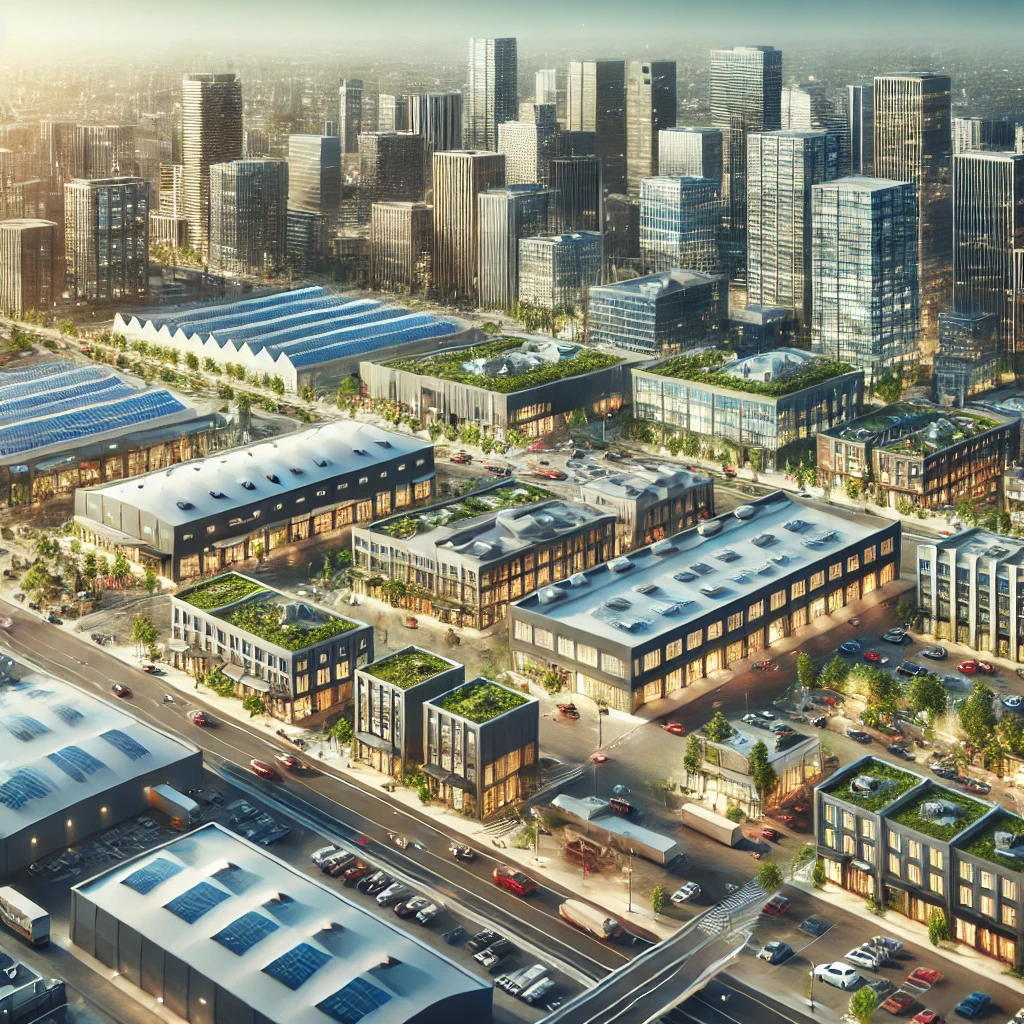
As we move into 2024, the U.S. commercial real estate (CRE) market stands at a pivotal juncture, shaped by the ongoing economic recovery, technological advancements, and shifting societal needs. The impact of inflation, interest rate hikes, and remote work continues to reshape the landscape. This blog will explore the predictions for the commercial real estate market in 2024, focusing on the benefits, challenges, and key statistics shaping the year ahead.
Predictions for 2024
- Office Space Demand
The demand for office spaces will continue to evolve as hybrid work models become the new norm. While companies are maintaining smaller footprints, high-quality office spaces in prime locations will see steady demand.
Prediction: Expect a focus on flexible, tech-enabled office spaces with enhanced amenities, while B-grade office buildings may struggle to fill vacancies. - Retail Spaces and E-commerce Influence
The retail sector, which saw significant shifts during the pandemic, will focus on experiential retail to draw consumers back into physical stores. At the same time, e-commerce will drive demand for logistics and warehouse spaces.
Prediction: Suburban retail centers and last-mile logistics hubs will experience growth, with investment in mixed-use developments likely increasing. - Multifamily and Housing Demand
Multifamily housing, particularly in growing suburban and secondary cities, will remain robust due to high demand and a shortage of affordable housing. Rising mortgage rates may push more people into the rental market.
Prediction: There will be continued construction of multifamily properties, but high-interest rates could slow new projects. - Industrial Real Estate
Industrial real estate is expected to be the hottest segment in 2024. The ongoing boom in e-commerce and a re-shoring of manufacturing to the U.S. is driving demand for warehouses and industrial spaces.
Prediction: Expect increased development in distribution centers, cold storage, and industrial real estate near ports and major transport hubs. - Sustainability and ESG (Environmental, Social, and Governance)
Sustainable development and compliance with ESG guidelines will become even more critical in 2024. Tenants and investors will prioritise energy-efficient buildings with eco-friendly certifications.
Prediction: Properties that implement sustainability measures will likely see increased demand, and developers that ignore these trends may struggle to attract both tenants and investors.
The Good: Opportunities in 2024

- Tech-Enhanced Workspaces: The shift to hybrid work will increase demand for high-quality, tech-integrated office spaces, particularly in major urban hubs. These spaces will cater to flexible work models and offer modern amenities that attract employees.
- Growth in Industrial Real Estate: The industrial real estate market, driven by e-commerce and supply chain demands, will remain a strong performer in 2024. Investors can benefit from robust rental growth and high occupancy rates in this sector.
- Suburban Growth: As remote and hybrid work models persist, suburban areas will continue to see growth in demand for multifamily housing and retail spaces. This trend benefits developers and investors targeting secondary markets.
The Bad: Challenges in 2024
- Rising Interest Rates: The Federal Reserve’s ongoing efforts to curb inflation through interest rate hikes will make borrowing more expensive, potentially slowing new developments and affecting transaction volumes.
- Office Market Uncertainty: The long-term future of the office market remains uncertain, with lower-tier office buildings struggling to regain pre-pandemic occupancy levels. Vacancy rates may remain high in less desirable locations.
- Retail Struggles: While experiential retail is expected to grow, traditional brick-and-mortar stores in less adaptable sectors could face continued challenges. Retailers that fail to integrate online and in-store experiences may struggle.
Key Statistics for 2024
- Industrial Vacancy Rates: According to CBRE, industrial vacancy rates in the U.S. are projected to remain low, hovering around 4.0%, reflecting ongoing strong demand for logistics space.
- Office Vacancy Rates: Office vacancy rates are expected to stay elevated at around 18% in major cities like San Francisco and New York, with suburban office spaces seeing slightly better conditions.
- Multifamily Rent Growth: Rent growth for multifamily properties is expected to average around 4.5% in 2024, with higher growth in Sunbelt cities such as Austin, Phoenix, and Miami.
- Retail Recovery: The retail sector is predicted to experience a moderate recovery, with a 2.8% increase in retail rents in suburban areas as more consumers prioritize local shopping experiences.
- Sustainable Building Premiums: Properties that meet ESG criteria and green building certifications could see rental premiums of 5-10%, reflecting growing demand for sustainable spaces.

Conclusion
2024 presents both opportunities and challenges for the commercial real estate sector in the U.S. While industrial and multifamily properties are expected to thrive, sectors like office and retail face a more uncertain future. Rising interest rates and a shifting work environment will require developers, investors, and property managers to remain adaptable and forward-thinking, particularly with the increasing importance of sustainability.
By staying informed and responsive to market trends, real estate professionals can position themselves to navigate this dynamic market and capitalize on emerging opportunities.












